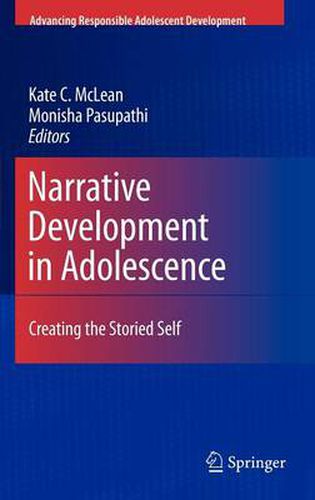Readings Newsletter
Become a Readings Member to make your shopping experience even easier.
Sign in or sign up for free!
You’re not far away from qualifying for FREE standard shipping within Australia
You’ve qualified for FREE standard shipping within Australia
The cart is loading…






This title is printed to order. This book may have been self-published. If so, we cannot guarantee the quality of the content. In the main most books will have gone through the editing process however some may not. We therefore suggest that you be aware of this before ordering this book. If in doubt check either the author or publisher’s details as we are unable to accept any returns unless they are faulty. Please contact us if you have any questions.
Monisha Pasupathi and Kate C. McLean Where Have You Been, Where Are You Going? Narrative Identity in Adolescence How can we help youth move from childhood to adulthood in the most effective and positive way possible? This is a question that parents, educators, researchers, and policy makers engage with every day. In this book, we explore the potential power of the stories that youth construct as one route for such movement. Our emphasis is on how those stories serve to build a sense of identity for youth and how the kinds of stories youth tell are informed by their broader contexts - from parents and friends to nationalities and history. Identity development, and in part- ular narrative identity development, concerns the ways in which adolescents must integrate their past and present and articulate and anticipate their futures (Erikson, 1968). Viewed in this way, identity development is not only unique to adol- cence (and emergent adulthood), but also intimately linked to childhood and to adulthood. The title for this chapter, borrowed from the Joyce Carol Oates story, highlights the precarious position of adolescence in relation to the construction of identity. In this story, the protagonist, poised between childhood and adulthood, navigates a series of encounters with relatively little awareness of either her childhood past or her potential adult futures. Her choices are risky and her future, at the end, looks dark.
$9.00 standard shipping within Australia
FREE standard shipping within Australia for orders over $100.00
Express & International shipping calculated at checkout
This title is printed to order. This book may have been self-published. If so, we cannot guarantee the quality of the content. In the main most books will have gone through the editing process however some may not. We therefore suggest that you be aware of this before ordering this book. If in doubt check either the author or publisher’s details as we are unable to accept any returns unless they are faulty. Please contact us if you have any questions.
Monisha Pasupathi and Kate C. McLean Where Have You Been, Where Are You Going? Narrative Identity in Adolescence How can we help youth move from childhood to adulthood in the most effective and positive way possible? This is a question that parents, educators, researchers, and policy makers engage with every day. In this book, we explore the potential power of the stories that youth construct as one route for such movement. Our emphasis is on how those stories serve to build a sense of identity for youth and how the kinds of stories youth tell are informed by their broader contexts - from parents and friends to nationalities and history. Identity development, and in part- ular narrative identity development, concerns the ways in which adolescents must integrate their past and present and articulate and anticipate their futures (Erikson, 1968). Viewed in this way, identity development is not only unique to adol- cence (and emergent adulthood), but also intimately linked to childhood and to adulthood. The title for this chapter, borrowed from the Joyce Carol Oates story, highlights the precarious position of adolescence in relation to the construction of identity. In this story, the protagonist, poised between childhood and adulthood, navigates a series of encounters with relatively little awareness of either her childhood past or her potential adult futures. Her choices are risky and her future, at the end, looks dark.